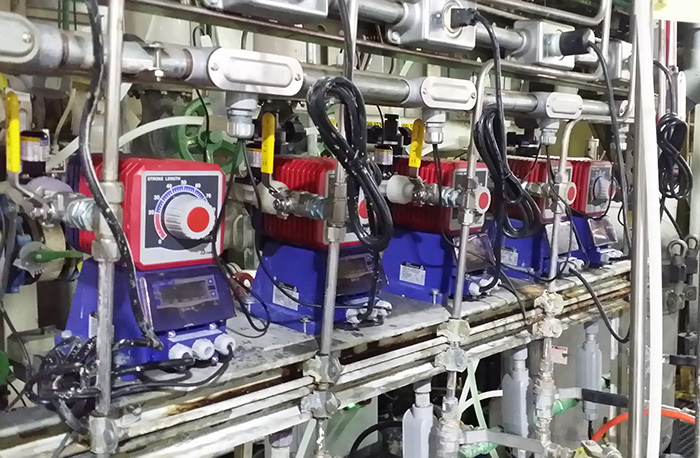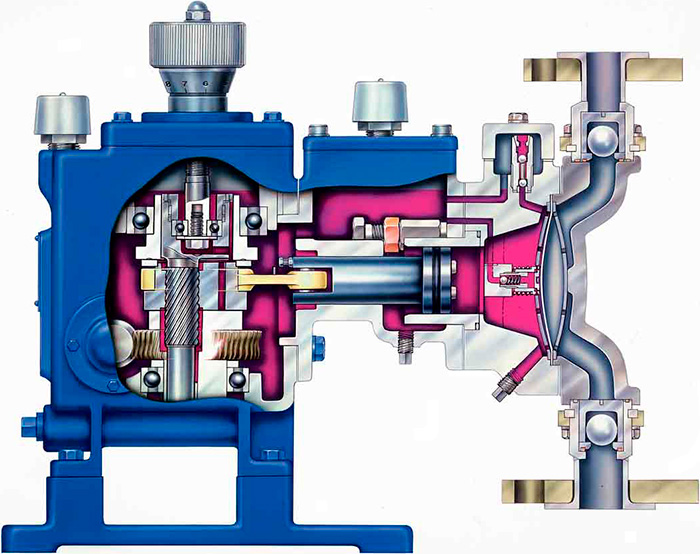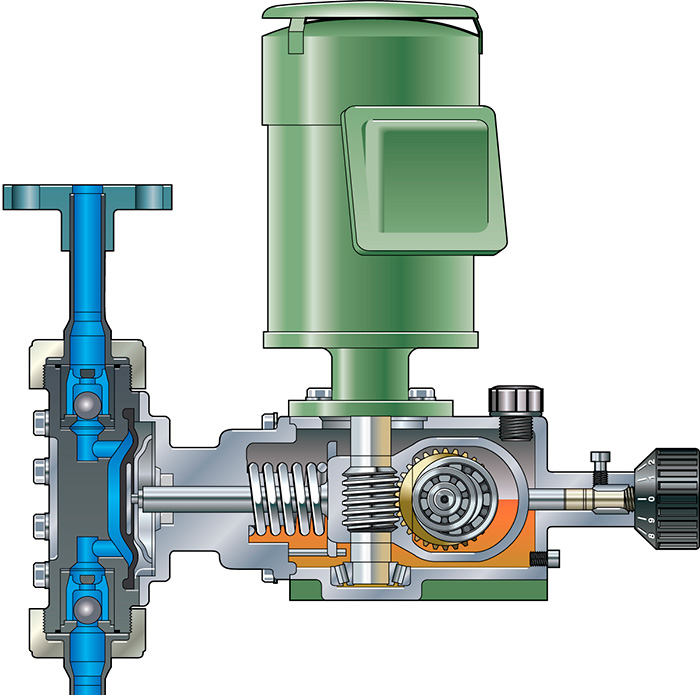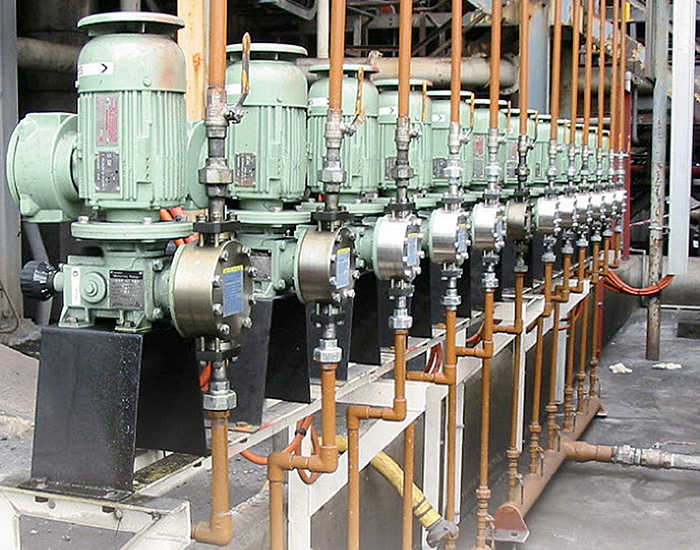Changing needs and requirements have caused pump technology to evolve.
IWAKI
09/02/2016
In the American National Standards Institute standard 7.0, the Hydraulic Institute defines controlled-volume metering pumps as “reciprocating positive displacement pumps typically used for the injection of chemical additives, proportional blending of multiple components, or metered transfer of a single liquid. These types of pumps are used in applications requiring highly accurate, repeatable and adjustable rate of flow.”
 Image 1. Metering pumps receive an analog input signal from a PLC to proportionately change output based on system demand requirements. Flow verification sensors on the pumps confirm pump feed to the PLC. (Images & graphics courtesy of IWAKI America)
Image 1. Metering pumps receive an analog input signal from a PLC to proportionately change output based on system demand requirements. Flow verification sensors on the pumps confirm pump feed to the PLC. (Images & graphics courtesy of IWAKI America) Figure 1. A cross-sectional view of a hydraulically backed metering pump. An eccentric cam is used in the gear reduction assembly to change the stroke length of the piston’s linear motion. The piston pressurizes hydraulic fluid, pressing the diaphragm forward with even pressure and changing the volume in the head cavity. Check valves turn this volumetric change into a repeatable pumping motion. (Courtesy of IWAKI America)
Figure 1. A cross-sectional view of a hydraulically backed metering pump. An eccentric cam is used in the gear reduction assembly to change the stroke length of the piston’s linear motion. The piston pressurizes hydraulic fluid, pressing the diaphragm forward with even pressure and changing the volume in the head cavity. Check valves turn this volumetric change into a repeatable pumping motion. (Courtesy of IWAKI America) Image 2. Large electronic solenoid metering pumps in an automotive plating facility. Pumps are used to replenish chemicals to maintain concentration levels.
Image 2. Large electronic solenoid metering pumps in an automotive plating facility. Pumps are used to replenish chemicals to maintain concentration levels. Figure 2. Cross-section of mechanical metering pump wet end and gear reduction assembly. Rotational energy is converted to linear reciprocating motion in the gear assembly, moving a diaphragm back and forth to change the pump head volume. Check valves then control flow into and out of the pump head.
Figure 2. Cross-section of mechanical metering pump wet end and gear reduction assembly. Rotational energy is converted to linear reciprocating motion in the gear assembly, moving a diaphragm back and forth to change the pump head volume. Check valves then control flow into and out of the pump head. Image 3. Metering pumps with explosion proof motors in coal mine, part of the coal preparation plant. Several types of chemicals may be used to clean and process raw coal to remove inorganic matter, increase heat value, and meet customer specifications.
Image 3. Metering pumps with explosion proof motors in coal mine, part of the coal preparation plant. Several types of chemicals may be used to clean and process raw coal to remove inorganic matter, increase heat value, and meet customer specifications.
